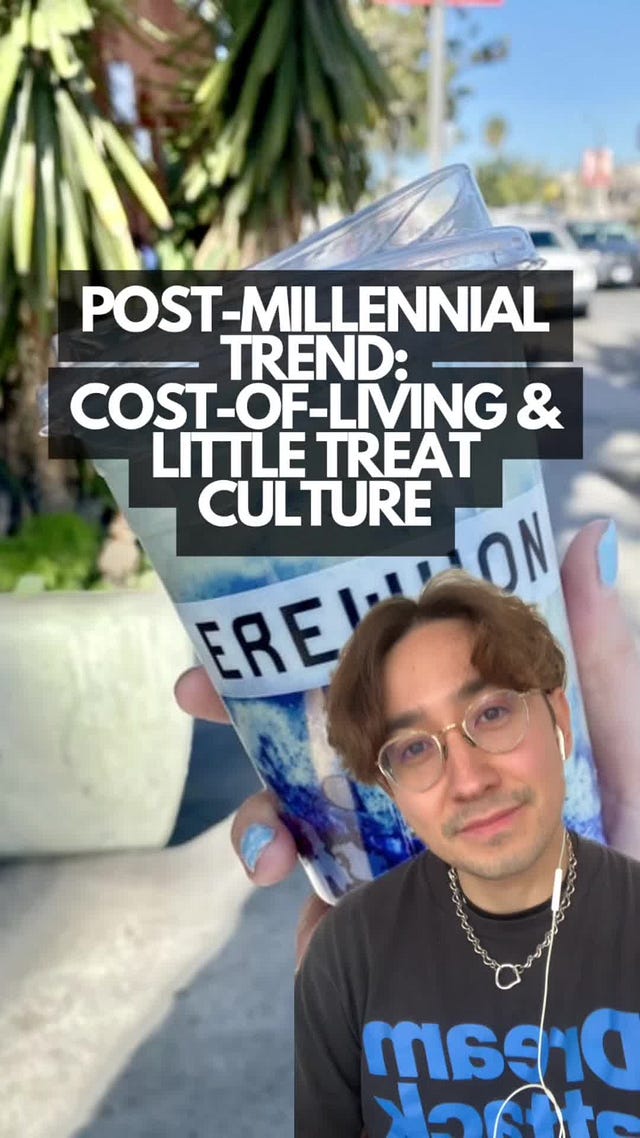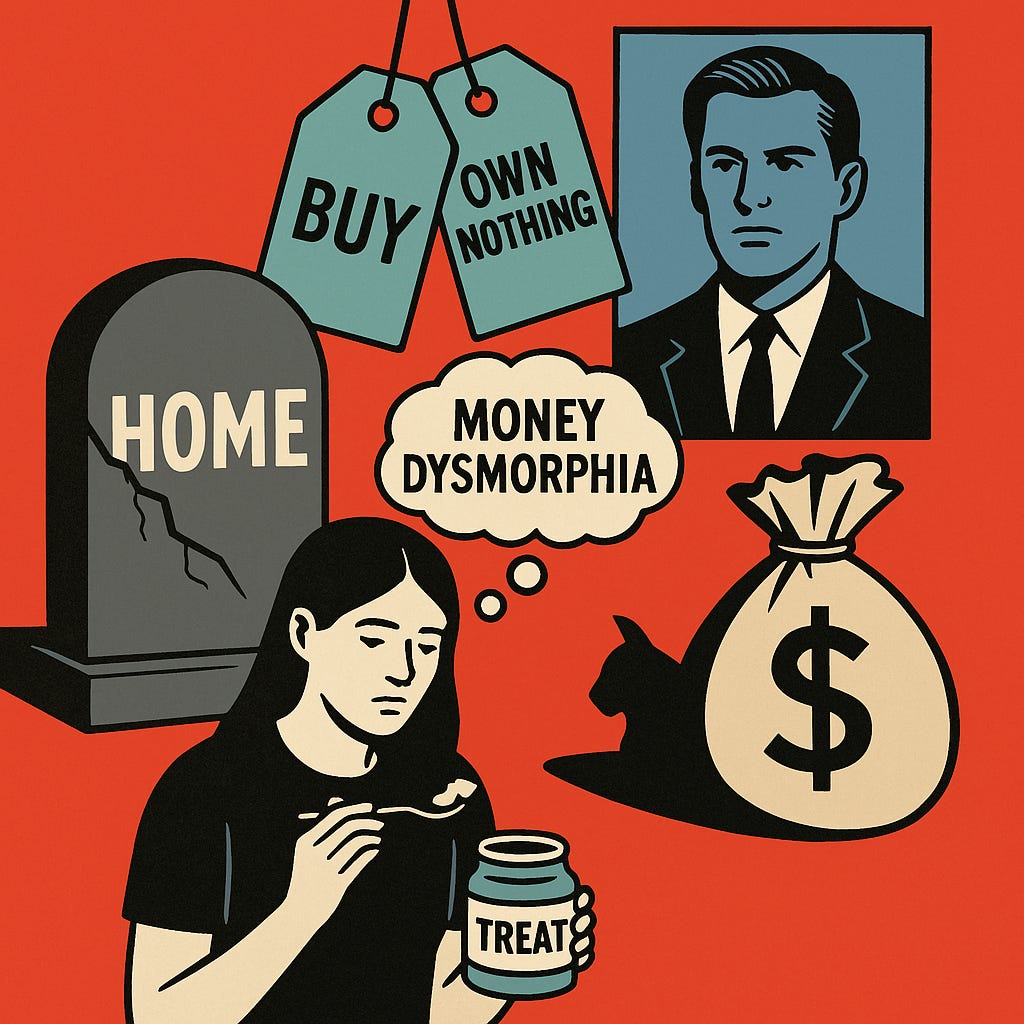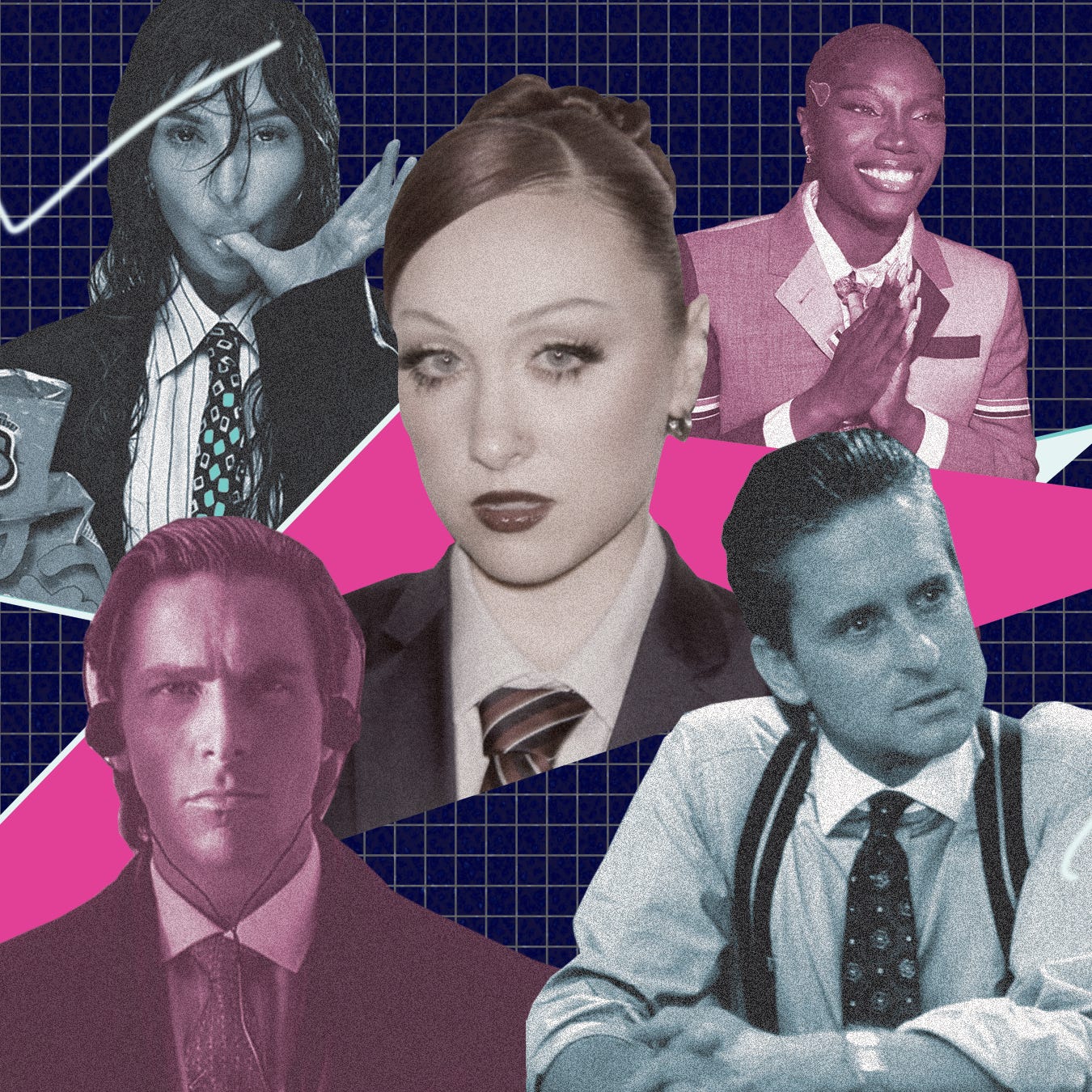Buy Everything, Own Nothing!
How Gen Z is redefining spending, ownership, and success in an era of financial anxiety and performative wealth.
From “Recession Indicators” to “Rich in Spirit” TikToks to the fact that 43% of American Gen Z admit to experiencing “Money Dysmorphia,” it’s clear that young people have a unique, and deeply conflicted relationship with cash money, honey.
Gen Z have already lived through two major global recessions, a cost-of-living crisis, and a chronically online culture where financial anxiety and aspirational excess exist side by side. What we’re seeing as a result is a kind of financial nihilism set in; a belief that the traditional rules of wealth-building no longer apply, so you might as well spend on what brings you joy (or at least gets you through the day).
Money Dysmorphia, a term coined by The New York Times, describes the disconnect between your actual financial situation and how you feel about your financial situation. This phenomenon is particularly common among Gen Z, who are relentlessly exposed to performative displays of wealth on TikTok and Instagram, distorting their perception of what financial stability really looks like. Think: photos of $21 Erewhon smoothies or curated carousels from a weekend at Coachella — despite the fact that 60% of tickets were bought on finance.
Despite feeling perpetually broke, Gen Z satisfy their spending appetites with “little treats”—small, affordable indulgences, that don’t break the bank, think the Lipstick Effect for a new generation. It’s what’s fuelling everything from beauty miniatures and collectable plushies, to a surprising boom in artisanal sauces and preserves. (Yes, really.) But even little treats aren’t safe. Trump’s tariffs have come for Sonny Angels and Labubus alike — hitting the exact imports that power Gen Z’s comfort economy.

 Tiktok failed to load.
Tiktok failed to load.Enable 3rd party cookies or use another browser
To understand how we got here, it’s worth looking at the generation just ahead of them. As Esther Moisy-Kirschbaum, business trend forecaster and writer of Oblique Forecasting, explains, Millennials came of age during the 2008 financial crisis — and their early spending habits reflected the financial climate of the time (remember when Millennials were told we’d never own homes because of our avocado toast obsession — not, you know, decades of systemic failure?)
“Millennials were just entering adulthood when the 2008 financial crisis hit. The way they spent, or rather cut corners, reflected the financial climate of the time. Think: bringing bottom-shelf liquor from the off-license to house parties instead of paying today’s eye-watering drink prices at cocktail bars and clubs. Going home on the night bus because there were no Ubers. Holidays on a budget meant sleeping at a hostel or couch surfing. Vintage shopping? It smelled bad, but it cost next to nothing — and that’s what washing machines are for anyway.”
But by the 2010s, Esther notes, everything changed:
“VC money entered the chat. A slew of startups were born, and spending money on Uber, Deliveroo, Airbnb and Depop became almost second-nature. Everything was more convenient, but that ease has a price. Gen Z grew up with those apps. Forgoing the convenience they’ve always known in the name of budget cuts? It’s not difficult, it’s asking them to rewire their baseline reality. To Millennials, these services felt like luxuries-turned-norms. To Gen Z, they are the norm, not perks.”
This is the world Gen Z inherited. They grew up with that convenience baked in. Uber wasn’t a treat, it was the default. Depop wasn’t a side hustle, it was a marketplace. Asking Gen Z to “cut back” often means asking them to unlearn what they’ve always known — to rewire their entire reality.
The phrase “Buy everything, own nothing” captures a defining paradox of Gen Z: a generation fully immersed in consumer culture, yet largely excluded from ownership culture. For many, traditional financial milestones; buying a home, building retirement savings, feel increasingly out of reach.
This Buy Everything, Own Nothing dissonance shows up everywhere: from Klarna-powered impulse buys to the rise of the Boom Boom aesthetic — a hyper-glam, 80s-inspired visual language of power suits, glass offices, and slicked-back hair. Think Patrick Bateman meets Tom Ford-era Gucci. It’s the fetishisation of wealth in an era of economic instability; capitalism as cosplay.
Hovering above it all is the Great Wealth Transfer, the estimated $84 trillion set to pass from Baby Boomers and older generations to their Millennial (and eventually Gen Z) children over the next two decades. It creates a strange tension: on the one hand, many Gen Z are drowning in rent, debt, and precarious work. On the other, they’re the future beneficiaries of wealth they didn’t earn.
So what does this mean for brands, businesses, and organisations?
There’s no denying that money is a major preoccupation for young people — spending it, earning it, saving what little they have of it. In a world where wealth is so often performed and real security feels increasingly out of reach, Gen Z are acutely aware of the contradiction. Brands can’t afford to ignore this economic reality. The opportunity lies in leaning into the tension — embracing both vibe and value, realism and desire.
If you're a brand, business, or organisation looking to better understand cultural shifts like these and what they mean for your audience, get in touch hello@sibling.studio





Wow we are literally slicking back our hair for paycheques that will never come 🥲 I’m on the periphery of Gen Z and can remember a time when the nightbus was the done thing… will I ever go back? Absolutely not. Do I own a home? Also no 🫡 Hard relate.